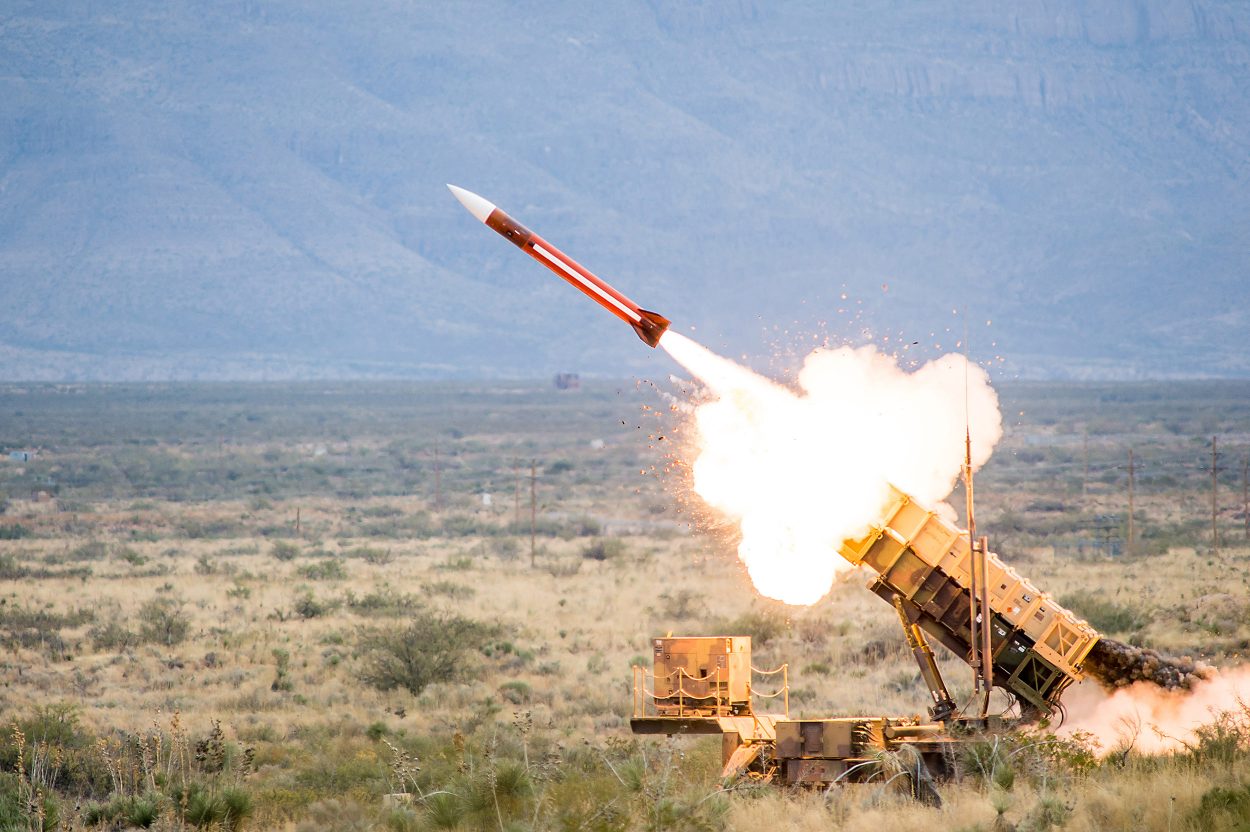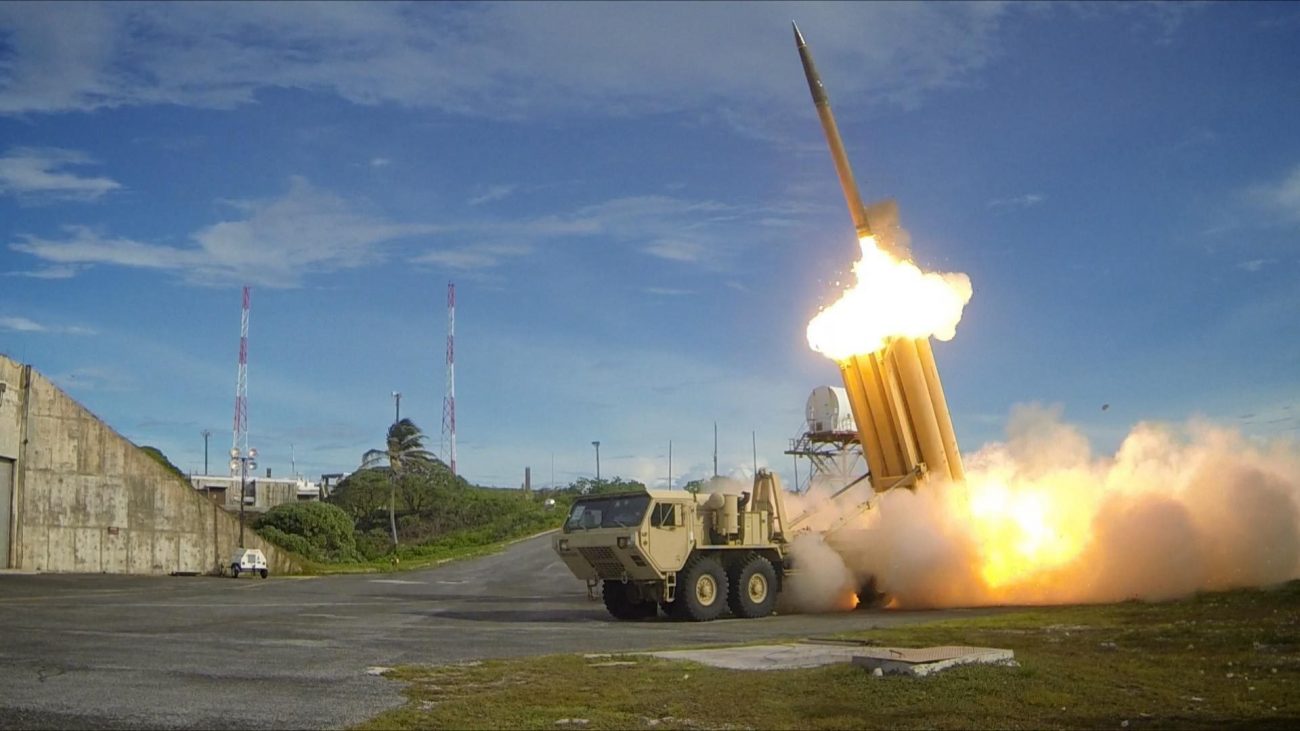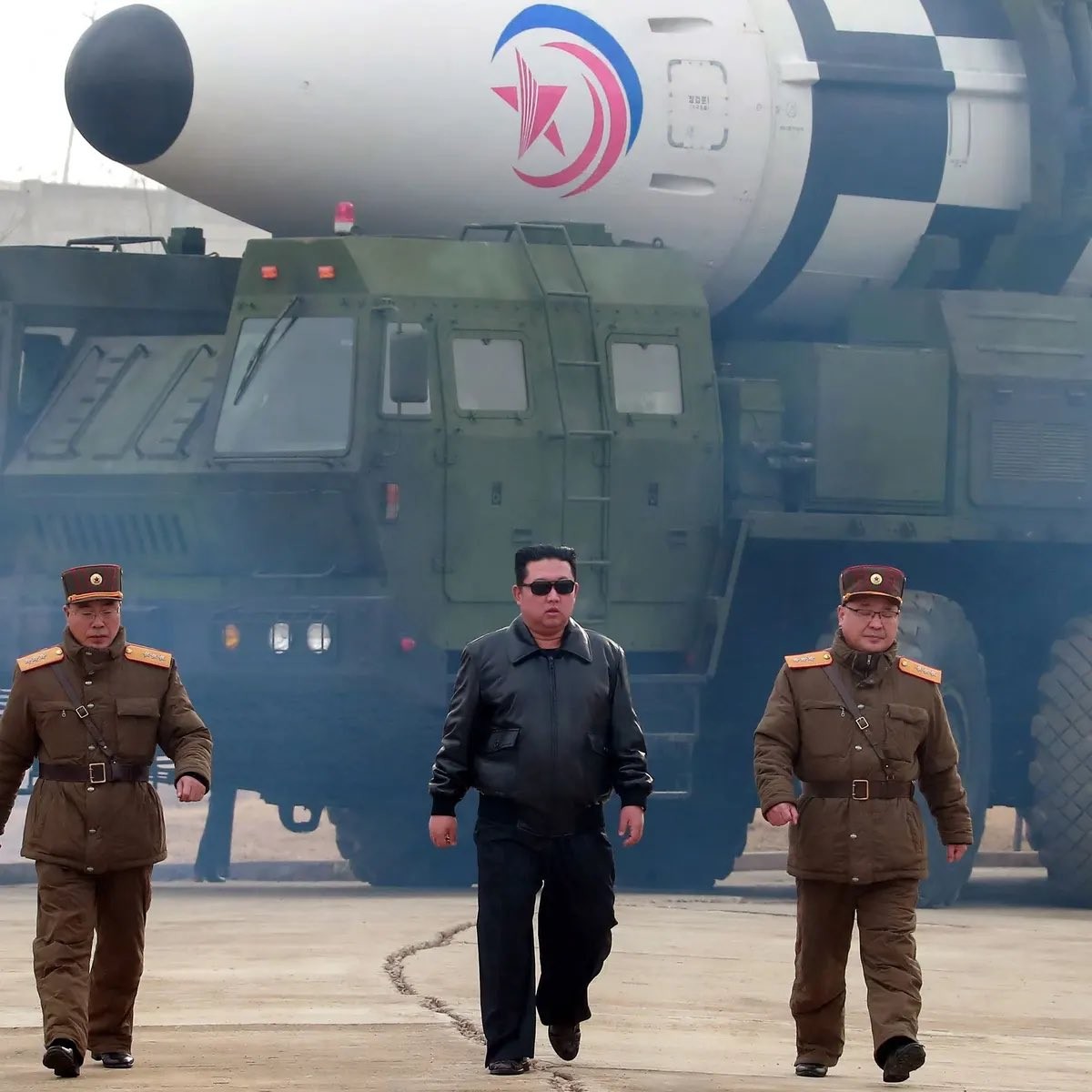South Korea’s Terminal High Altitude Area Defense (THAAD) is set to get new performance improvement equipment, as per the press release of South Korea’s Ministry of National Defense (MND). Expectedly, China is not happy.
As per the press release, US Forces Korea (USFK) will be integrating the new equipment with the THAAD missile defense unit located in Seongju, situated around 200 kilometers from Seoul.
The MND press release said that the new equipment would enhance “the defense capability of the existing THAAD system to protect the [South] Korean people from the North Korean missile threat and further strengthen the defense capability for core assets.”
The press release did not provide details about the new equipment but a day before it was released, around ten vehicles loaded with THAAD-related equipment entered the Seongju base in North Gyeongsang Province, according to a report by Kyunghyang Shinmun, a major South Korean daily newspaper.
The vehicles reportedly contained radar, electronic equipment (EEU), and missile transport vehicles, and the equipment is said to be related to the last stage of the USKF’s Joint Emergent Operational Need (JEON) program, aimed at integrating the THAAD system with the Patriot Advanced Capability-3 (PAC-3) missile-defense system.
JEON is a three-stage program that integrates the THAAD and the PAC-3 missile-defense systems.
The program’s first stage is to separate the launchers from the THAAD battery to enable remote control of the launchers. A full THAAD battery comprises six launchers, a fire-control unit, the THAAD system’s AN/TPY-2 radar, and a support unit.
The second stage is to use advanced THAAD radar information to launch Patriot missiles.
The third stage aims to integrate the PAC-3 MSE (Missile Segment Enhanced) interceptor of the Patriot missile system into the THAAD launchers.
Integrating Patriot With THAAD
In March, the US Missile Defense Agency (MDA) successfully fired a PAC-3 MSE interceptor from a THAAD system at White Sands Missile Range, New Mexico.
The PAC-3 MSE interceptor flew to the intercept point. Subsequently, it self-destructed, demonstrating that the Patriot M903 Launching Stations and PAC-3 MSE interceptors can be deployed with the THAAD Weapon System using only the THAAD radar and TFCC (Fire Control & Communication) for support.
The Patriot missile system is a lower-tier surface-to-air (SAM) system produced by Raytheon and Lockheed Martin that can counter tactical ballistic missiles (TBM), cruise missiles, loitering munitions, and advanced aircraft.

THAAD is an anti-ballistic missile defense system designed to shoot short, medium, and intermediate-range ballistic missiles in their mid-course and terminal phases (descent or re-entry) by intercepting with a hit-to-kill approach.
The PAC-3 MSE has an operational range of 40 kilometers and can intercept targets at altitudes of up to 24.2 kilometers. Interceptors from the THAAD system have an operational range of more than 200 kilometers and can hit targets at altitudes up to 150 kilometers.
Also, THAAD AN/TPY-2 radar can detect targets farther than the PAC-3 system’s AN/MPQ-65 or AN/MPQ-65A radar.
So, the general idea is to use the PAC-3 MSE interceptors and the THAAD system, coupled with the AN/TPY-2 radar, simultaneously for upper and lower defenses.
Tensions Over The Korean Peninsula
Notably, the new THAAD-related equipment has arrived in South Korea amid soaring tensions over the Korean Peninsula in the wake of recent ballistic missile launches by North Korea suspected to be a build-up for the resumption of nuclear testing by Pyongyang for the first time since 2017.

The US Army and MDA have been working over the past several years to integrate THAAD and Patriot in the wake of an ‘urgent operational need’ (or JEON) from the USFK for a defensive capability against the rising missile threat from North Korea.
Retd. Brig. Gen. Randy McIntire, the former cross-functional team lead for AMD, told Defense News in a March 14, 2018 interview that THAAD and Patriot are both deployed on the Korean peninsula and the integration effort is to take advantage “of the great radar that is part of THAAD to increase the battlespace of Patriot.”
Over the past decade, North Korea has amassed many offensive missile systems such as KN-23 Short Range Ballistic Missiles (SRBMs) and KN-25 600mm caliber super-large long-range artillery. KN-23s and KN-25s can operate below the effective altitude of THAAD and can hit all areas of South Korea and reach parts of Japan.
Therefore, the best countermeasure for such threats is integrating THAAD with other weapons systems like Patriot missiles, thereby providing the combatant commanders with the capability to deploy the suitable missile for the right threat at the right time.

China Worried By THAAD Deployment
While the THAAD system in South Korea is meant to counter North Korean missile threats, its presence on the Korean Peninsula is a cause of worry for China as well, as it could be used to spy on Chinese military facilities.
Therefore, in 2016 Beijing protested Seoul’s decision to allow THAAD systems in South Korea, even going as far as imposing trade and cultural sanctions that resulted in substantial economic losses for the country.
The trade and cultural exchanges only resumed after South Korea’s former President Moon Jae-in committed to a “three nos” policy in 2017 – no additional deployment of THAAD, no South Korean integration into a US-led regional missile defense system, and no trilateral alliance with the US and Japan.
However, tensions between China and South Korea over the THAAD missile system have reignited because of the reversal of the “three nos” policy by Moon’s successor Yoon Suk Yeol, who was elected President in March 2022.
Yoon has said that the “three nos” policy was only a statement of Moon’s political position and not a commitment or a formal agreement with China.
Accordingly, the Yoon administration has granted an additional 400,000 square meters (98 acres) of land to the US to “normalize operations” of the THAAD system, bringing the total land in South Korea set aside for the THAAD systems up to 730,000 square meters (180 acres).
Beijing is worried that THAAD’s AN/TPY-2 radar system, if directed at China, could be used to monitor missile launches within a radius of 1,500 to 2,000 kilometers.
Furthermore, THAAD is also deployed in Guam and Japan. Experts suggest that if the THAAD systems in Japan and Guam are upgraded the same way as the South Korean THAAD, they could all be linked automatically via the Alaska Central Command Center, known as regional missile defense.
- Contact the author at tanmaykadam700@gmail.com
- Follow EurAsian Times on Google News




